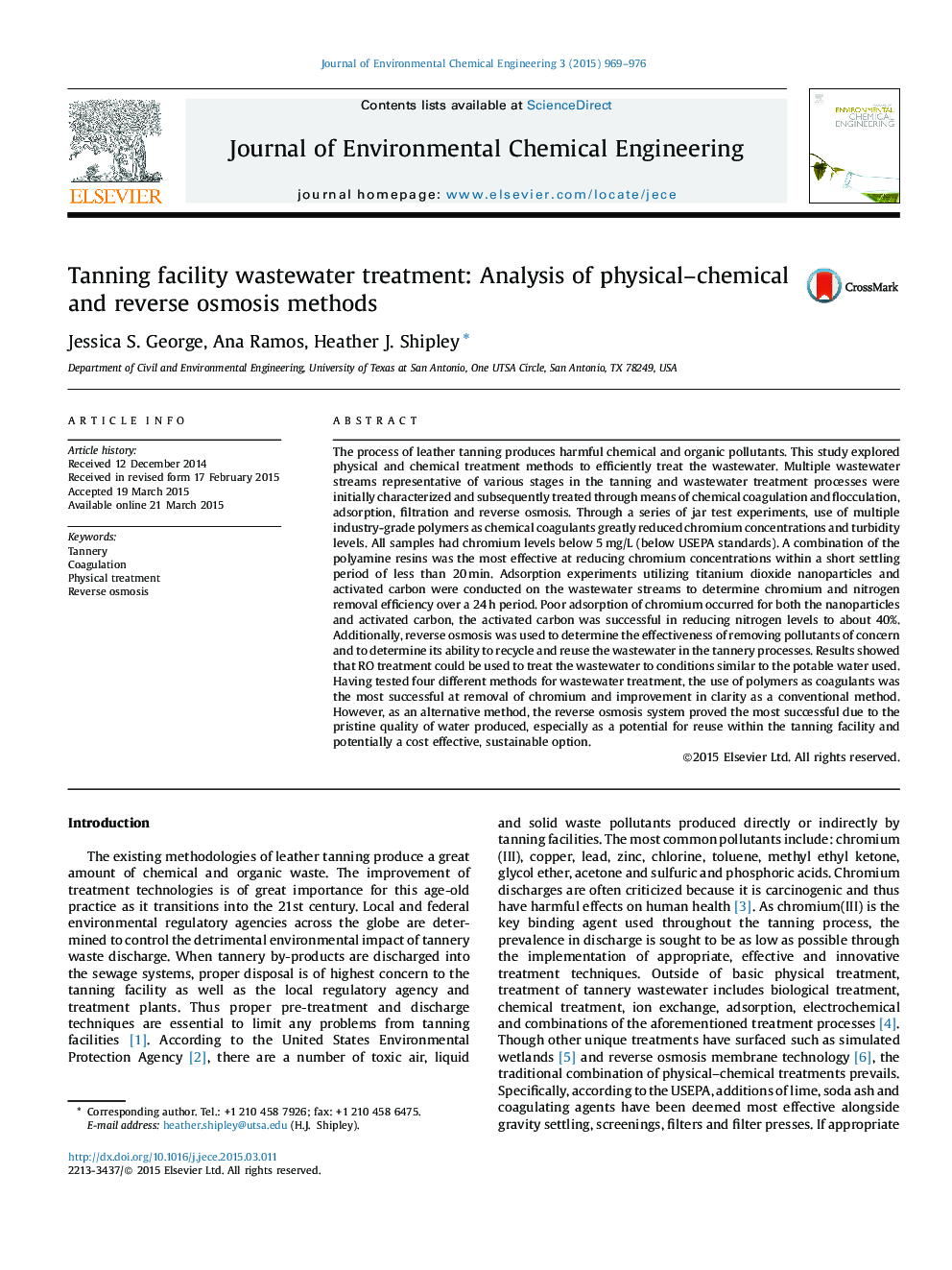| کد مقاله | کد نشریه | سال انتشار | مقاله انگلیسی | نسخه تمام متن |
|---|---|---|---|---|
| 222322 | 464274 | 2015 | 8 صفحه PDF | دانلود رایگان |
• Polyamine resins were the most effective at reducing Cr and turbidity.
• RO treatment could treat wastewater to conditions similar to potable water.
• RO treatment allows for recycling and reuse of the wastewater.
The process of leather tanning produces harmful chemical and organic pollutants. This study explored physical and chemical treatment methods to efficiently treat the wastewater. Multiple wastewater streams representative of various stages in the tanning and wastewater treatment processes were initially characterized and subsequently treated through means of chemical coagulation and flocculation, adsorption, filtration and reverse osmosis. Through a series of jar test experiments, use of multiple industry-grade polymers as chemical coagulants greatly reduced chromium concentrations and turbidity levels. All samples had chromium levels below 5 mg/L (below USEPA standards). A combination of the polyamine resins was the most effective at reducing chromium concentrations within a short settling period of less than 20 min. Adsorption experiments utilizing titanium dioxide nanoparticles and activated carbon were conducted on the wastewater streams to determine chromium and nitrogen removal efficiency over a 24 h period. Poor adsorption of chromium occurred for both the nanoparticles and activated carbon, the activated carbon was successful in reducing nitrogen levels to about 40%. Additionally, reverse osmosis was used to determine the effectiveness of removing pollutants of concern and to determine its ability to recycle and reuse the wastewater in the tannery processes. Results showed that RO treatment could be used to treat the wastewater to conditions similar to the potable water used. Having tested four different methods for wastewater treatment, the use of polymers as coagulants was the most successful at removal of chromium and improvement in clarity as a conventional method. However, as an alternative method, the reverse osmosis system proved the most successful due to the pristine quality of water produced, especially as a potential for reuse within the tanning facility and potentially a cost effective, sustainable option.
Journal: Journal of Environmental Chemical Engineering - Volume 3, Issue 2, June 2015, Pages 969–976
